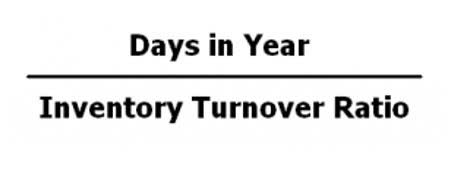
Fyle flags questionable expenses immediately, preventing those late-month donut surprises. By month’s end, you’re overwhelmed and uncertain which expenses tie to which job. They’re buying parts for customer orders, grabbing coffee for the team, and restocking shelves—often without a streamlined receipt submission process. Only after you’ve accounted for all the $6 boxes would you move on to the older $5 boxes.
- However, there are some drawbacks retail businesses need to keep in mind.
- Here you can’t tell easily what item came first, and there’s no real benefit to selling based on procurement time.
- Expert Assisted is a monthly subscription service that requires a QBO subscription and provides expert help to answer your questions related to the books that you maintain full ownership and control.
- A balance sheet is a picture of your business at a single point, unlike an income statement which covers a time (week, month, or year).
- While LIFO can be beneficial during periods of inflation due to lower taxable income, it may not reflect the true cost of goods sold accurately.
- RIM provides an estimate of inventory based on retail prices, including permanent markups or markdowns.
PRODUCT
For instance, retail accounting can be used for high-turnover items, while detailed tracking can be reserved for high-value products. It streamlines the mind-bending processes that enable small businesses to track inventory and profit margins. As with any method of accounting, however, retail accounting, too, presents some challenges. The cash flow statement is similar to the income statement in that it tracks the money that comes in and out of your business. However, the cash flow statement is more specific about when these transactions occur. For example, in your income statement, you might have listed an invoice in your sales, but your client might have 30 days to pay the invoice.

Pros and Cons of Retail Accounting
- We have financial relationships with some companies we cover, earning commissions when readers purchase from our partners or share information about their needs.
- This method often results in a lower reported cost of goods sold in times of rising prices, potentially reflecting higher net income on your financial statements.
- The retail method of accounting, which is used to calculate the cost of goods sold, relies on accurate tracking of inventory purchases, physical inventory counts, and the average cost of inventory.
- It estimates inventory value by assuming all items of a type have the same cost.
- Let’s assume you took a physical inventory count at the beginning of the quarter, and you know the actual cost of your inventory as of that date was $80,000.
- You may work out your cost-to-retail ratio as (0.2 × 0.7) + (0.4 × 0.2) + (0.6 × 0.1), which is 28%.
- Apart from the retail method, there are three primary cost accounting methods to value inventory – first in first out, last in first out and weighted average cost.
Retail accounting is a vital aspect of running a successful retail business. It provides valuable insights, helps with budgeting and inventory management, ensures compliance with tax laws, and enables informed decision-making. By implementing effective retail accounting practices, businesses can stay ahead of the competition and achieve long-term success. So, businesses need to prioritize retail accounting in their operations to thrive in the ever-changing world of business. It is another crucial accounting method for retail businesses of all sizes, distinct from FIFO primarily in its approach. LIFO accounting does the opposite of FIFO by assuming that the most recently added items to the inventory are sold first, as indicated by its name.
Retail Bookkeeping With First-In-First-Out (FIFO)
Yes, QuickBooks Desktop Enterprise can help with advanced inventory features like bookkeeping bin location tracking, bar code scanning, and FIFO inventory. Connect to your bank and automatically download all transactions including expenses, deposits, and transfers. Get real-time, automatic inventory updates with every sale and order so you don’t run out or overstock.
From determining accurate costs of goods sold to retail accounting strategic pricing and inventory management, cost accounting can be a game-changer. Retail accounting helps businesses make informed decisions by providing a clear picture of their financial health. With accurate and up-to-date financial data, business owners can identify areas that need improvement, plan for future investments, and make strategic decisions to drive growth and profitability. The retail method of valuing inventory only provides an approximation of inventory value since some items in a retail store will most likely have been shoplifted, broken, or misplaced.

JuanTax Plus is a comprehensive bookkeeping and tax compliance solution that is designed to cater to the needs of many industries including retail businesses. To overcome this challenge, retail businesses need to prioritize the regular reconciliation of their financial statements. This can help them maintain an accurate and up-to-date record of their financial transactions, which is crucial for making informed business decisions. Additionally, leveraging technology and automation tools can help streamline the reconciliation process, reducing the time and effort required while also improving accuracy and consistency.
It involves keeping track of financial transactions, managing inventory, and analyzing sales trends to make informed business decisions. In this blog, we will dive into the importance of retail accounting and how it can help businesses thrive. The LIFO method is beneficial when individual inventory units are indistinguishable from one another or when there’s no practice of rotating stock to ensure older items are sold first. It’s an essential retail accounting strategy for organizations looking to build their business from the ground up, providing a different perspective on inventory management and cost assessment. Through exceptional accounting software for retail businesses like Vencru, you can manage all the payments, labor charges, inventory stock, and keep an eye on your workers.
- There is no “wrong” method to use to value your inventory, but there is a “best” way for your business.
- For instance, retail accounting can be used for high-turnover items, while detailed tracking can be reserved for high-value products.
- Whether you choose the retail method, FIFO, or LIFO, maintaining accurate inventory records and embracing technology for tracking can make a significant difference.
- To ensure you meet customer demand and keep accurate records, tracking inventory is key.
- Furthermore, accounting and bookkeeping help retailers make informed decisions regarding pricing strategies, product offerings, and supply chain management.
Once they accept your invitation, they’ll automatically get signed up for QuickBooks Online Accountant, allowing them to access your data. Mark-ups increase the retail price, whereas mark-downs decrease the price. The retail method facilitates valuation in such situations, though there might be complexity in calculations. Many retailers have blamed theft, while some loss-prevention experts believe that administrative mistakes are undercounted. RIM’s reliance on estimates based on selling-price changes is a problem here, Shamapande said. The next step is to determine how much you made in sales from the store’s inventory.

H.R.1 “Big Beautiful Bill”: What Its Proposed Tax Reforms Could Mean for Your Business
This value is based on the cost at which you bought it on a first-in, first-out basis of https://www.bookstime.com/ priority. The leftover inventory will be valued on the basis of the most recent cost. It empowers retailers to respond swiftly to market changes and maintain a competitive edge. This alignment strengthens organizational focus and drives profitability. It pinpoints inefficiencies, allowing focus on high-value processes. Set spend limits, require receipts for certain amounts, and stop policy violations before they happen.
